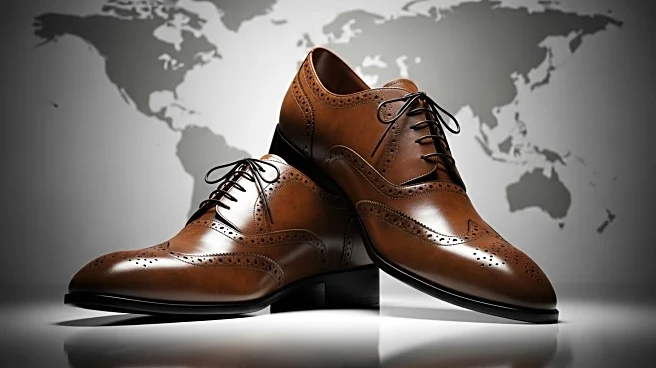What's Happening?
The 100th edition of Micam, an international footwear trade show in Milan, highlighted the challenges facing the Italian footwear industry. According to the Confindustria Moda Research Centre, sales and industrial production have declined significantly in the first half of the year. The event, which attracted over 20,000 visitors, showcased the industry's cautious optimism despite these setbacks. Key concerns include unfavorable exchange rates and tariffs, which are impacting competitiveness. The U.S. market remains crucial, accounting for 12% of Italy's export turnover. Exhibitors emphasized the importance of craftsmanship and innovation to maintain market presence.
Why It's Important?
The decline in the Italian footwear industry has broader implications for global trade and economic relations, particularly with the U.S. As tariffs and currency devaluation pose challenges, the industry must adapt to maintain its competitive edge. The focus on craftsmanship and 'Made in Italy' products highlights the importance of quality and tradition in international markets. The industry's ability to navigate these challenges will impact its global standing and influence trade dynamics. The emphasis on sustainability and innovation reflects a shift towards more responsible production practices, which could set a precedent for other industries.
What's Next?
The Italian footwear industry is likely to focus on strengthening its presence in key markets like the U.S. by leveraging its craftsmanship and quality. Companies may invest in digitalization and e-commerce to reach a broader audience and mitigate the impact of tariffs and exchange rates. The industry's commitment to sustainability and innovation will be crucial in attracting consumers who value ethical production. As the global economic landscape evolves, the industry must adapt to changing consumer preferences and market conditions to ensure long-term success.
Beyond the Headlines
The challenges faced by the Italian footwear industry underscore the importance of cultural and traditional values in global trade. The emphasis on 'Made in Italy' products highlights the role of heritage and craftsmanship in maintaining competitive advantage. As the industry navigates economic challenges, it must balance tradition with innovation to meet consumer demands. The focus on sustainability reflects a broader shift towards responsible production practices, which could influence other industries to adopt similar approaches.












